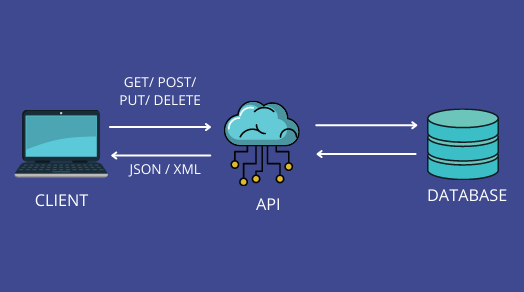Tech
Best Practices in API Design

APIs (Application Programming Interfaces) have become a critical component of the modern digital world, streamlining communication and interaction between different software applications. A major application of APIs is API integration, which allows distinct software platforms to efficiently communicate and share data, enabling businesses to automate their processes and achieve more coherent systems. For instance, one might refer to the integration between Qualtrics and Snowflake as a practical demonstration of API integration in action. But what sets a well-designed API apart from the rest?
The benefits of a well-thought-out API design can’t be overstated. Improved developer experience, faster documentation processes, and higher adoption rates for your API are just a few advantages. With these benefits in mind, this article delves into the intricacies of good API design, providing you with some best practices to consider.
- Understand Your Audience
Knowing your API’s target users is essential. Developers, both experienced and novice, are your primary audience. They need clear, consistent, and comprehensible APIs. Consider designing your API as if it’s a product, meeting the users’ needs and ensuring usability.
- Embrace Simplicity
A good API should be straightforward. Complexity can deter users and make your API harder to maintain. Strive for an intuitive design that makes sense to those using it. The simplest solution is often the best.
- Prioritize Consistency
Consistency across your API will ensure a more predictable experience for developers. Naming conventions, error responses, and endpoint structures should be standardized. This helps in reducing the learning curve and making the integration process smoother.
- Use Standard Protocols
Leverage standard HTTP methods and status codes. Using GET, POST, PUT, DELETE, etc., in the ways developers expect them to be used helps in setting clear expectations and reducing confusion.
- Offer Robust Documentation
An API can be expertly designed, but if it lacks comprehensive documentation, its adoption may be limited. Provide detailed instructions, examples, and perhaps even a sandbox environment for developers to test.
- Ensure Versioning
As your API evolves, you need a system in place to handle changes without disrupting existing users. Implement versioning from the outset, so developers are prepared for updates and can choose when to migrate to newer versions.
- Prioritize Security
Security is paramount. Utilize authentication and authorization protocols, and ensure data is encrypted during transit. Regularly update your security protocols and educate your users about best security practices.
- Feedback Loop
Engage with your developer community. Establish channels for feedback, be it through forums, direct communication, or even hackathons. Actively listening to your users can provide insights into how to improve your API.
- Limit Rate and Optimize Performance
Performance plays a crucial role in user experience. Ensure your API responds quickly to requests, and consider implementing rate limits to avoid system overloads. This not only ensures a better user experience but also protects your backend infrastructure.
- Flexibility for Growth
Lastly, always design with scalability in mind. As the usage of your API grows, there might be needs that you hadn’t anticipated initially. Ensure your design allows for flexibility and growth without significant overhauls.
Conclusion
In a tech-centric world, where integration and interactivity dominate, APIs act as the bridges connecting different software islands. An excellently designed API not only fosters integration but does so seamlessly, enhancing developer experience, simplifying documentation, and driving its adoption. By adhering to the best practices listed above, you ensure your API stands out, remains reliable, and serves its intended purpose efficiently.
-
Blog1 year ago
MyCSULB: Login to CSULB Student and Employee Portal – MyCSULB 2023
-
Android App3 years ago
Cqatest App What is It
-
Android1 year ago
What Is content://com.android.browser.home/ All About in 2023? Set Up content com android browser home
-
Software2 years ago
A Guide For Better Cybersecurity & Data Protection For Your Devices
-
Latest News2 years ago
Soap2day Similar Sites And Alternatives To Watch Free Movies
-
Android2 years ago
What is OMACP And How To Remove It? Easy Guide OMACP 2022
-
Android3 years ago
What is org.codeaurora.snapcam?
-
Business2 years ago
Know Your Business (KYB) Process – Critical Component For Partnerships





















